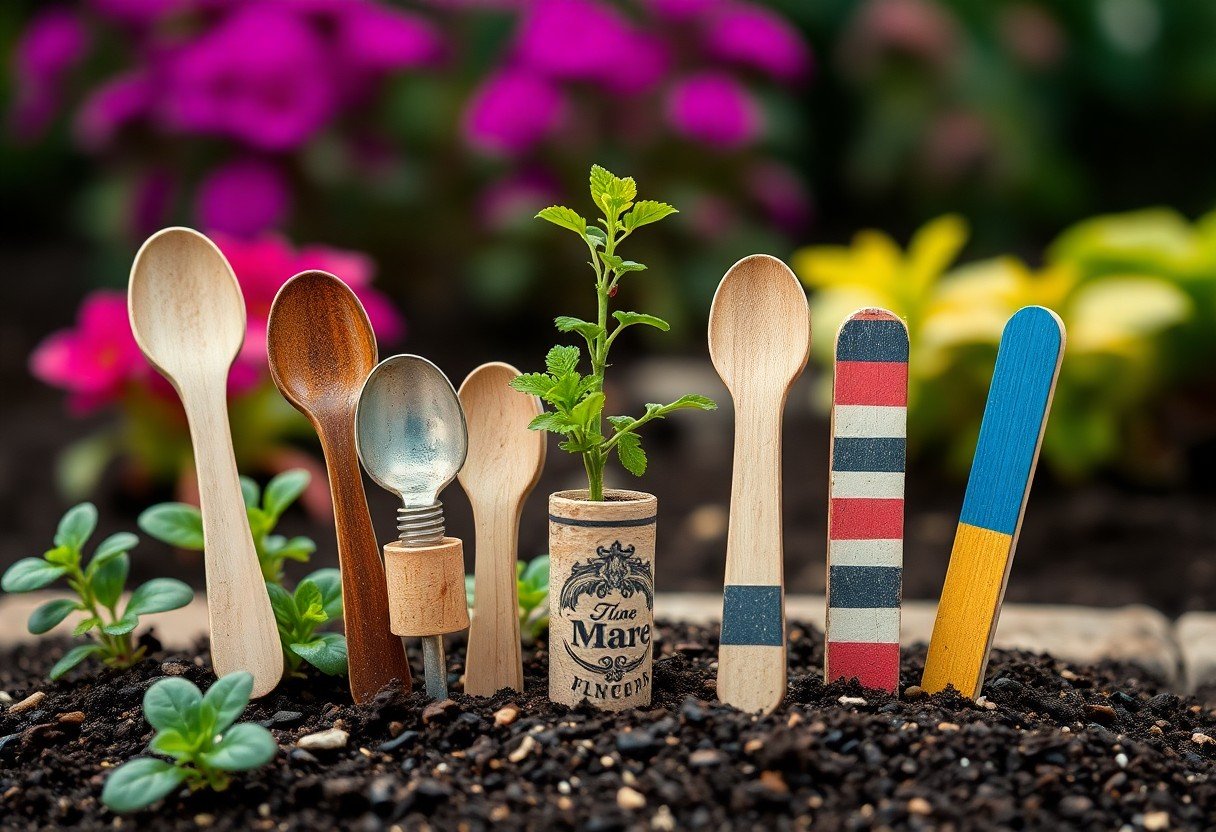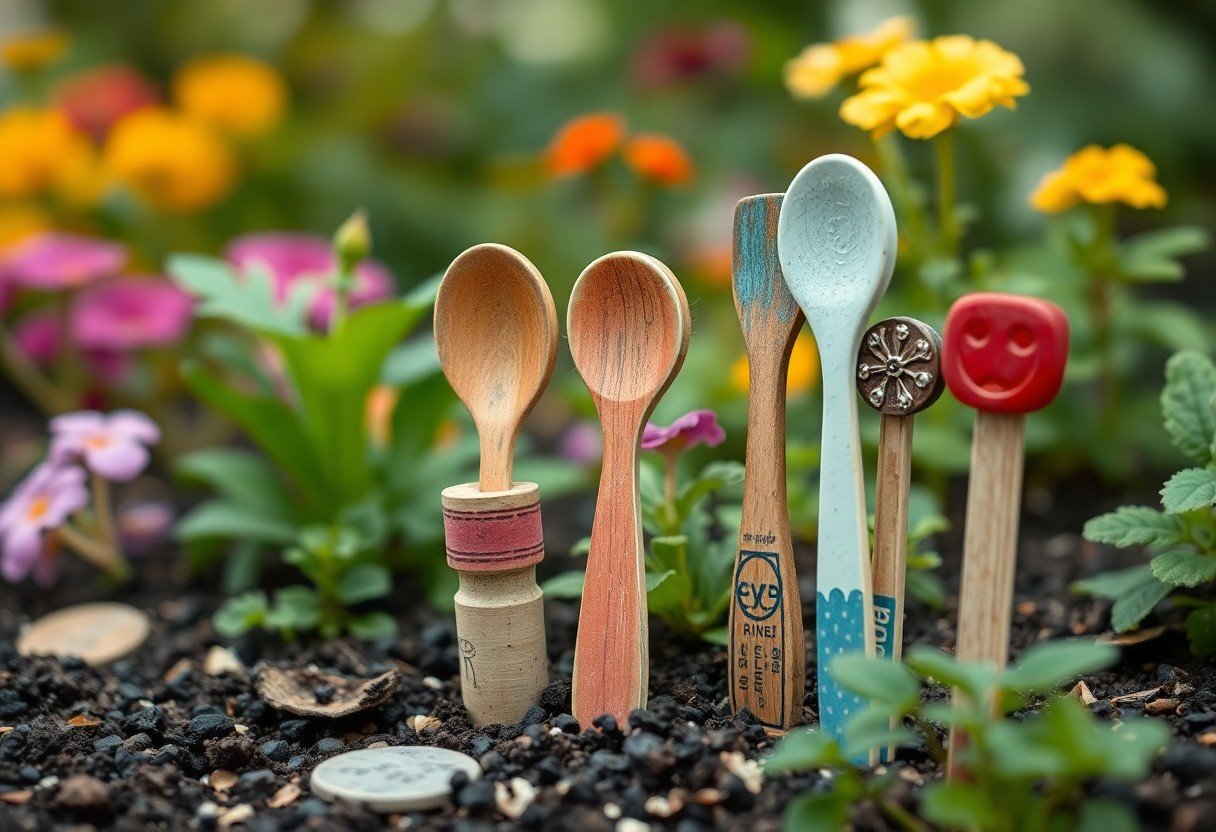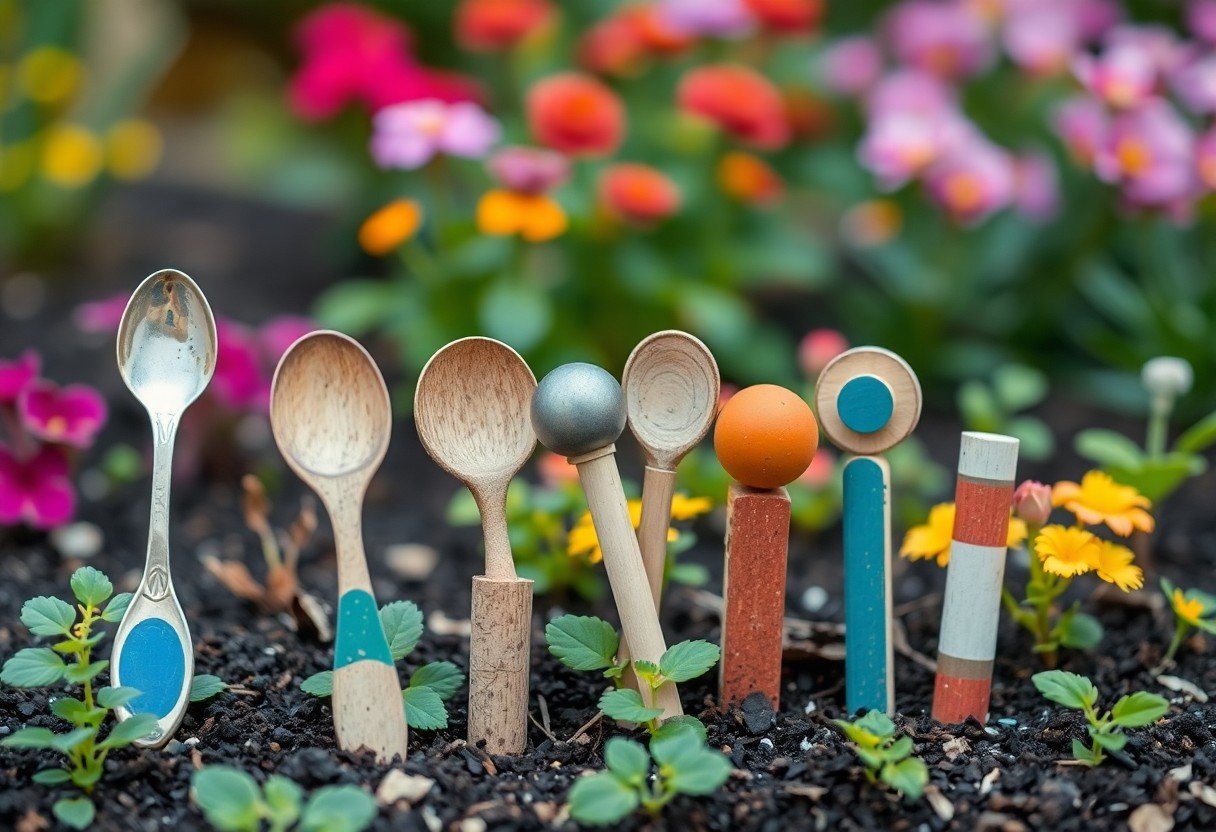You can add a personal touch to your garden by using repurposed materials as creative plant markers. Your garden will benefit from this eco-friendly approach, and you’ll reduce waste. You’ll learn how to transform everyday items into unique markers, giving your plants a distinct identity and adding character to your outdoor space. This approach allows you to get creative and make your garden truly yours.
Choosing the Right Materials
While selecting materials for your plant markers, you can explore various options, including those found in 25 Creative DIY Plant Markers & Tags for inspiration. This will help you get started on repurposing materials to create unique markers for your plants.
Identifying Suitable Repurposed Materials
Any material that can be written on or labeled can be used as a plant marker, allowing you to personalize your garden or indoor space with your choice of markers.
Factors to Consider for Durability
An crucial step in choosing the right materials is considering durability, as you want your plant markers to withstand various weather conditions. You should think about the following factors:
- Water resistance
- UV protection
- Material longevity
Perceiving the durability of your materials will help you make informed decisions when selecting the best options for your plant markers.
Suitable materials for plant markers can vary greatly, and you have the flexibility to choose what works best for you. When evaluating materials, consider factors such as:
- Ease of use
- Creativity and personalization
- Environmental impact
Perceiving the advantages and disadvantages of each material will enable you to create plant markers that not only serve their purpose but also reflect your personal style and values.
Designing Your Plant Markers
Assuming you have gathered your repurposed materials, you can start designing your plant markers. Consider the style and theme of your garden to create a cohesive look.
Tips for Creativity and Aesthetics
Marking your plants with unique identifiers can enhance your garden’s appearance. You can try:
- using different colors and shapes
- adding decorative elements
- Choose durable materials
- Keep it simple
- exposure to weather
- material quality
- maintenance habits
- soil conditions
- moisture levels
- sunlight exposure
After designing your markers, place them near your plants to add a personal touch.
How-to Guide for Simple Designs
Aesthetically pleasing plant markers can be created with simple designs. You can paint or draw on your markers to give them a personalized look.
Simple designs can make your plant markers stand out, you can use stencils or stickers to create patterns and add your plant’s name in a beautiful font, making your garden more organized and visually appealing.
Preparing the Materials
It is vital to gather and prepare your repurposed materials before creating your plant markers. You can find inspiration for unique materials to use as plant labels at 20 Creative DIY Plant Labels & Markers to spark your creativity. Collect materials like old spoons, rocks, or wooden sticks to create your markers.
Cleaning and Sterilizing Repurposed Materials
Sterilizing your materials is a must to prevent the spread of diseases to your plants. You should wash your materials thoroughly with soap and water, then let them dry completely before using them as plant markers.
Safety Precautions to Consider
Materials like sharp objects or small parts can be hazardous, so you need to handle them with care. You should be aware of the potential risks and take necessary precautions to avoid accidents.
It is also important to consider the potential risks associated with using certain materials, such as lead-based paints or toxic substances. You should choose materials that are safe and non-toxic to ensure your plant markers do not harm your plants or the environment. By taking these precautions, you can create unique and safe plant markers using repurposed materials.
Creating the Plant Markers
For a unique and eco-friendly approach, consider using repurposed materials to create your plant markers. This method not only reduces waste but also adds a personal touch to your garden or indoor space.
Step-by-Step Instructions for Assembly
The process of assembling your plant markers involves gathering materials and following a simple sequence. The steps can be summarized as follows:
| Material | Use |
|---|---|
| Repurposed items (e.g., old spoons, stones) | Marker base |
| Permanent marker or paint | Labeling |
How-to Add Personalized Details
Now that you have assembled your plant markers, you can add personalized details to make them more special. You can paint or draw patterns, add the plant’s name in a decorative font, or even include the date it was planted.
Creating personalized details on your plant markers allows you to express your creativity and make your garden or indoor space truly yours. As you add these personal touches, you can think about what makes each plant special to you, such as the occasion it was given or the memory it evokes, and incorporate these elements into the design of your markers, making them not just functional but also meaningful and reflective of your personal style.
Tips for Effective Use
Your creativity can shine with repurposed materials as plant markers. Consider the following tips:
You can find more ideas on Use recycled materials for unique plant tags. Perceiving the benefits, you will enjoy using them in your garden.
Placement Strategies for Optimal Visibility
To maximize visibility, place your plant markers near the base of each plant, making it easy for you to identify your plants. This will help you keep track of your garden’s progress.
Maintenance and Upkeep of Plant Markers
Maintaining your plant markers is imperative to ensure they continue to serve their purpose. You should regularly inspect your markers for damage or wear, replacing them as needed to keep your garden organized.
Placement of your plant markers in a spot where they won’t get damaged by watering or sunlight is important. You can also use a sealant to protect them from the elements, ensuring your markers continue to be a beautiful and functional part of your garden.
Troubleshooting Common Issues
After creating your plant markers, you may encounter some issues that need to be addressed to ensure they remain effective and durable.
Identifying and Solving Problems with Plant Markers
For instance, you can identify problems with your plant markers by checking for fading, damage, or illegibility, and solve them by replacing or repairing the markers as needed.
Factors Affecting Marker Longevity
Troubleshooting common issues with your plant markers involves considering factors that affect their longevity, including:
. The factors you consider will help you create more durable markers.
Affecting the longevity of your plant markers are factors such as:
. The longevity of your markers depends on how well you address these factors.
Conclusion
From above, you now have a clear understanding of using repurposed materials as creative plant markers. You can transform your old items into unique markers, adding a personal touch to your garden. By utilizing your creativity, you will not only reduce waste but also give your plants a distinct identity, making your garden more engaging and personalized to your style. You can experiment with various materials to create your own distinctive plant markers, enhancing your garden’s charm.



